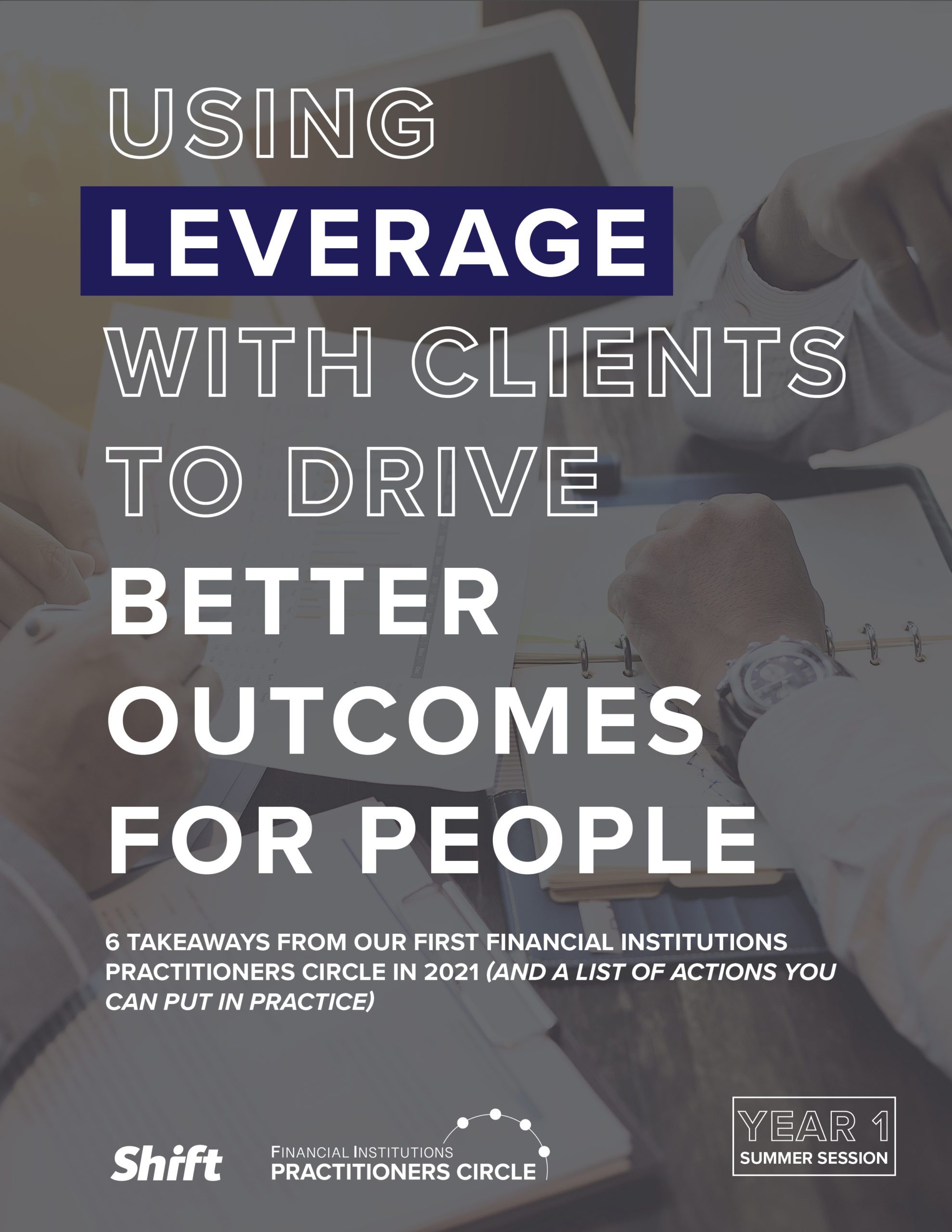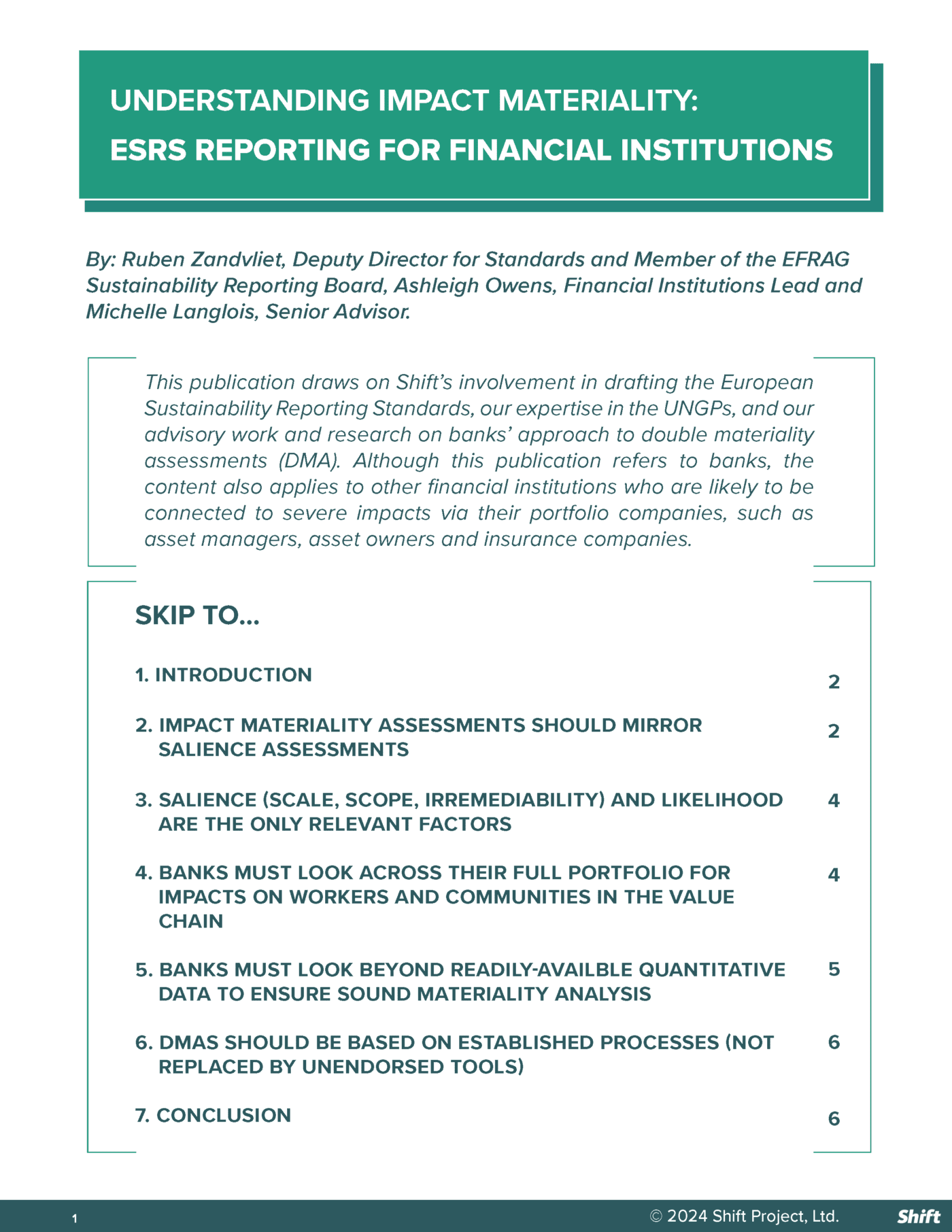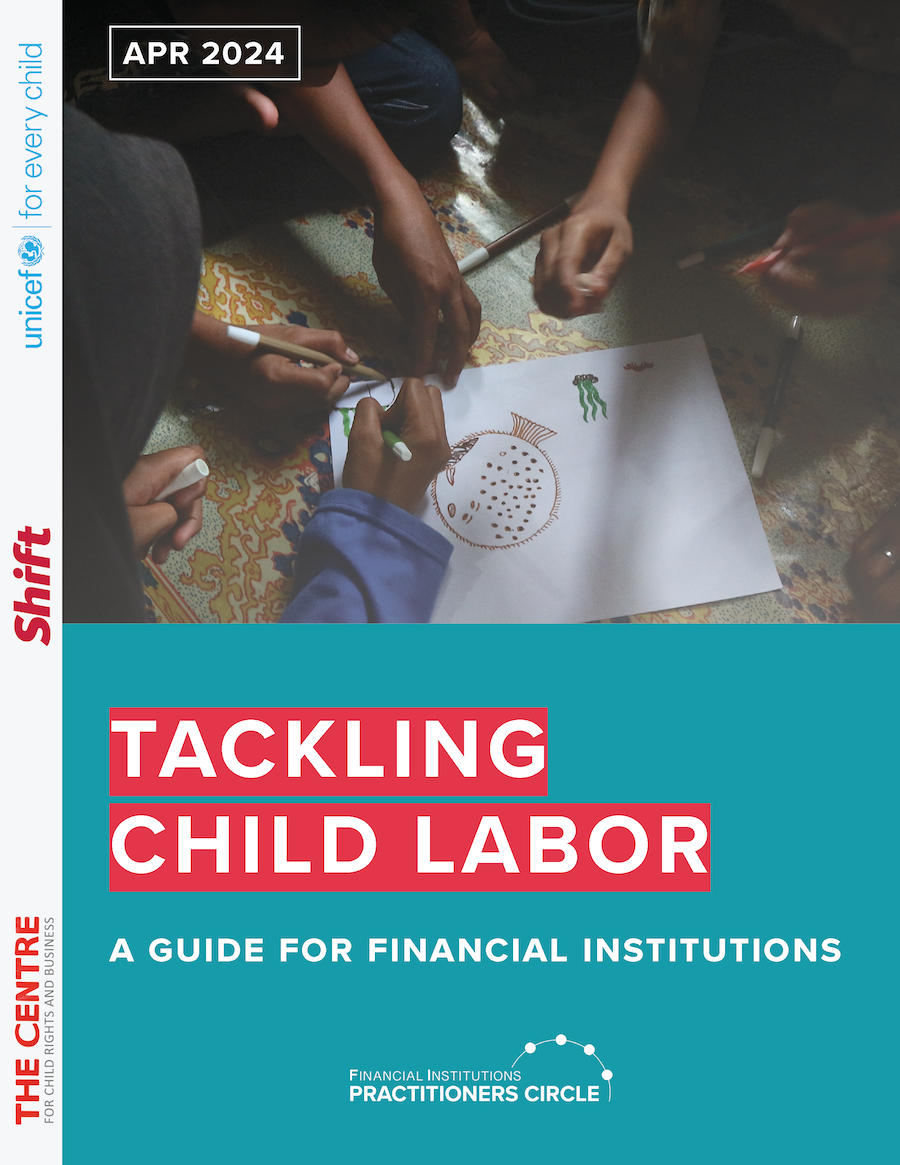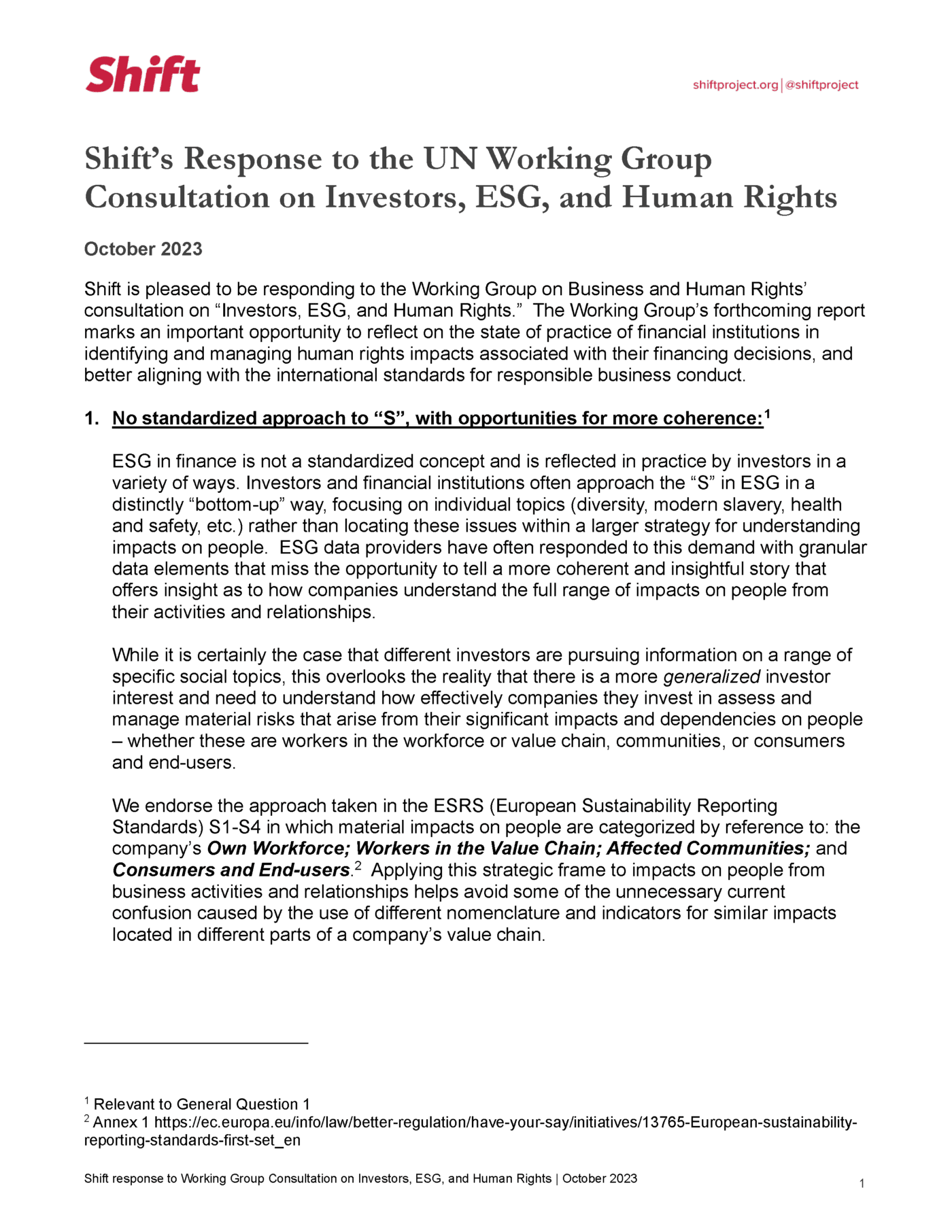In March 2021, Shift held the first peer-learning session of its Financial Institutions Practitioners Circle, focusing on the topic of leverage. This resource captures the key takeaways of the session.
The traditional approach of many banks and Export Credit Agencies (together “FIs”) has been to assess risk from a credit risk perspective and to make a binary decision about whether or not they will enter into commercial relationship with a client. As such, too often those decisions have been made on the basis of risk appetite rather than considering the more complex task of risk management, engagement with the client and the application of firm sustainability expectations. More committed FIs are shifting towards an approach that emphasizes managing risks to affected stakeholders rather than a sole focus on managing potential reputational risks. In addition to setting human rights-related expectations of clients upfront, FIs now need to focus, for higher risk sections of the portfolio, on scrutinizing the appropriateness of the expectations against intended outcomes, reviewing client adherence to them and evaluating their impact.
When FIs take this approach, we see greater alignment with the UN Guiding Principles’ focus on improving outcomes for people. Moreover it facilitates a move away from so-called “cut and run” approaches whereby the bank makes another binary decision to cut ties with clients amid reputational concerns without first attempting to use leverage. Due Diligence is a wheel after all: it doesn’t start and end at assessment. The bank has a responsibility to get to action: to use its influence (leverage) to seek to improve outcomes for adversely affected people, including, at a minimum, engagement with clients around risks. This also helps the bank to get to the “yes, and” approach to navigating higher-risk transactions, whereby the bank can more confidently take on clients or transactions that pose heightened social risk, if it is prepared to invest the resources necessary for leverage and it has a credible road map for where the client needs to get to in terms of maturity of approach and/or concrete Key Performance Indicators (KPIs). It goes without saying that an element of pragmatism needs to be brought to bear when looking to achieve this at a portfolio level. The prioritization of resources and focus at the assessment phase is particularly important for financial institutions given their challenge of scale.
The FI’s responsibility to respect human rights includes the need to understand where it has leverage – in the multiple different forms of leverage available – and where it needs to build it; it means using this leverage to seek to prevent and address harm in order to justify continued engagement. Leading FIs are increasingly exploring and institutionalizing this process.
Here are our 6 key takeaways from our discussion about how to consider leverage for financial institutions from the perspective of the UNGPs, with practical steps that might help turn these insights into action.




